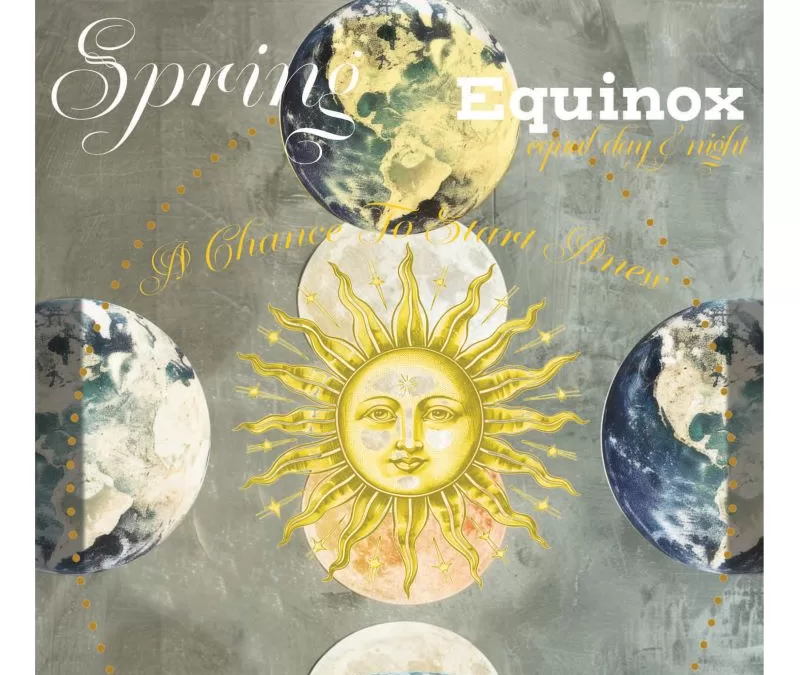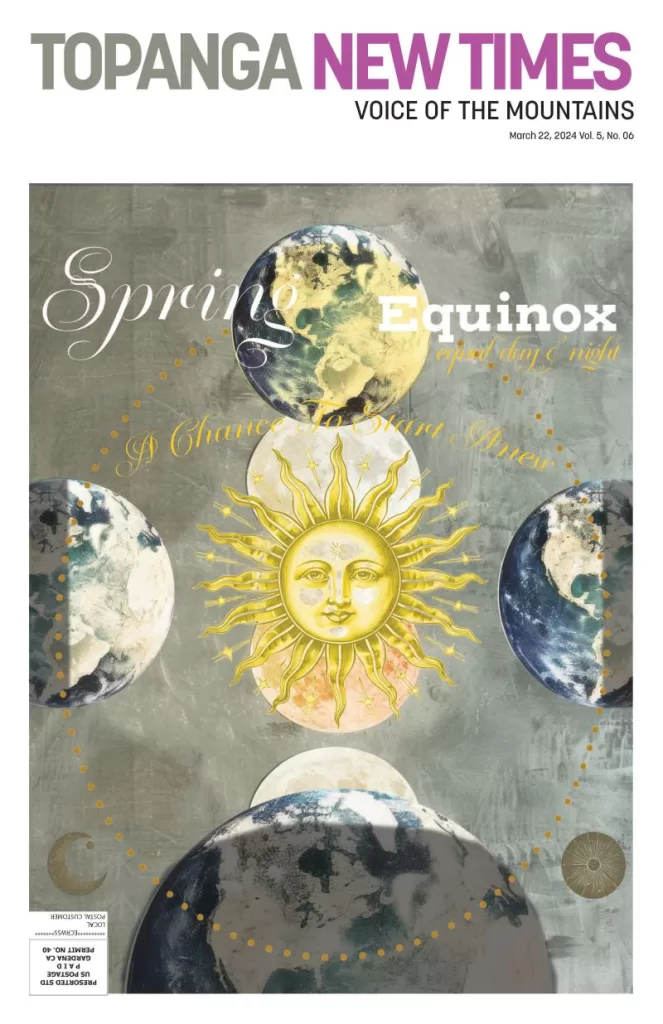
Spring arrived on March 19, at 8:06 pm. It was early this year, the earliest vernal equinox since 1896, thanks to Leap Year. The equinox occurs twice a year. It marks the moment when the days and nights are of equal length. The spring equinox means we are already heading towards summer in the Northern Hemisphere and the longest day of the year at the summer solstice. This is the season of growth, renewal, and rebirth. It’s a time for new beginnings, a season of hope. Cover concept and design by Urs Baur
Tons and tons of mud and rock collapsed down the steep canyon wall, burying Topanga Canyon Boulevard in a mountain of, well, mountain. The ongoing full closure of Topanga’s main street is a logistical nightmare for local businesses and commuters, but as the days have stretched into weeks, many residents are feeling a remarkable sense of peace and quiet, as if the canyon had reverted to the time before freeways and commuter traffic and the frenetic pace of modern life. County crews were continuing to wrestle with rock and debris. When Topanga New Times went to press the official word was that the length of the closure was still “indefinite.”
Locally, this has been one of the wettest seasons on record—Topanga has already received more than two feet of rain—and more mudslides are still possible as water continues to sink into the ground and reactivates old slides. Use caution and stay safe out there.
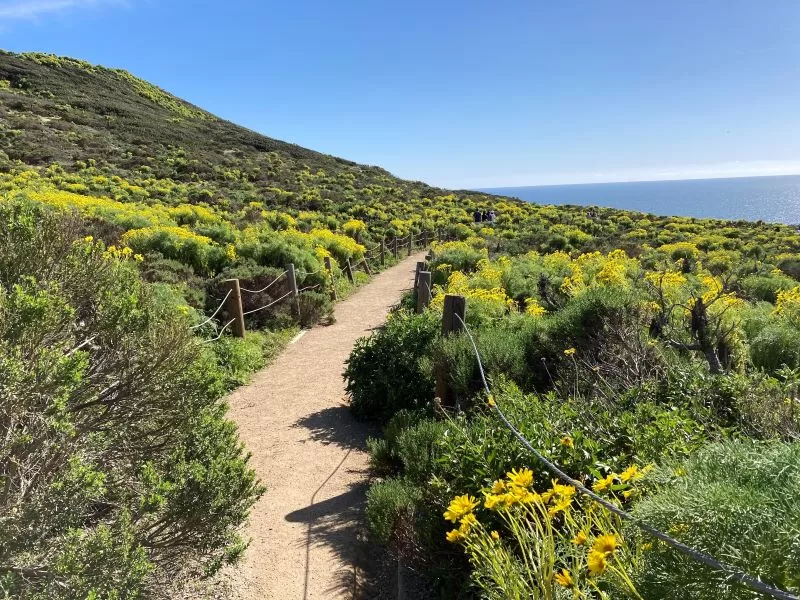
Spring has already sprung—the Vernal Equinox was early because of Leap Year, it occurred on March 19. Easter is also early this year, arriving on March 31. Unlike most Western holidays that have a fixed day, Easter is a movable feast that is tied to the lunar calendar. It always falls on the Sunday following the first full moon after the spring equinox. That can be anytime between March 22 and April 25.
The Jewish celebration of Passover is also tied to the lunar calendar, but it uses different calculations. Passover begins at sundown on April 22 this year. Orthodox Easter is also tied to the lunar calendar, but it takes place after the first full moon following the Jewish celebration of Passover, moving it all the way to May 5 this year. Ramadan, the most holy time of the year for Muslims, began on March 12 this year and will continue through April 9. LAUSD students will be celebrating spring break from March 25-April 1. Spring break varies at other schools, but it’s safe to say that some percentage of the population will be celebrating something spring-related from now until May. No matter what holidays one observes, spring is a season for rebirth, renewal, and rejoicing.
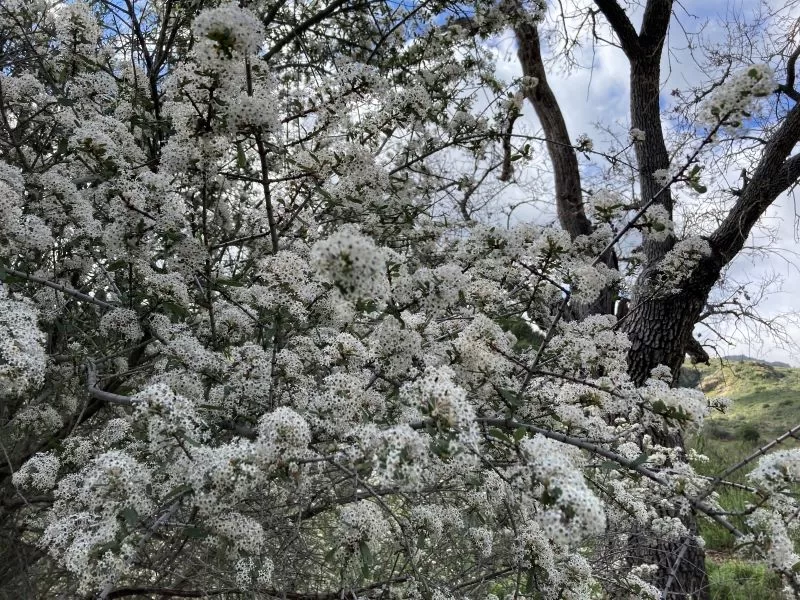
The arrival of spring brings peak activity for many species of wildlife. The road closure in Topanga is a boon for rabbits, skunks, raccoons, deer, coyotes, bobcats and many other species that are frequent victims of vehicle strikes and are especially active at this time of year. Slowing down and staying alert on neighborhood roads and anywhere we find ourselves driving can help save lives, our own and others.
New legislation—AB 2552—seeks to protect all California wildlife by limiting the use of first-generation anticoagulant rodenticides. Existing law prohibits the use of second generation anticoagulant rodenticides in wildlife habitat areas. This new proposal would also limit the use of the first generation rodenticides diphacinone, chlorophacinone, and warfarin. These highly toxic poisons have taken a catastrophic toll on wildlife, including mountain lions. Limiting their presence in the environment is critically important for the survival of imperiled species. We’ll keep our readers posted as this bill makes its way through the legislative process.
The annual gray whale migration is underway, as whales head north along the California coast on their way back to their summer feeding grounds in the Arctic from the lagoons in the Sea of Cortez where they mate and give birth in the winter. NOAA has announced an end to the Unusual Mortality Event for the species that occurred from December 2018 through November 2023. That’s good news for gray whales—it is estimated that the population may have declined by as much as 40 percent during that period. The worst may be over, but this species still faces challenges. A young whale was found stranded and dying on a beach at Point Dume just days after NOAA’s announcement about the end of the UME. It’s a reminder of just how fragile the ecological balance is, a balance that can tip either way.
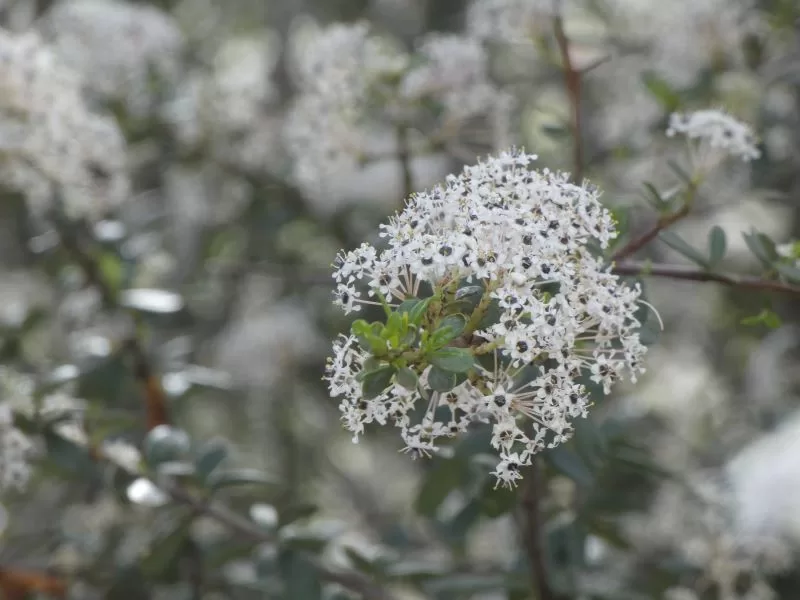
We’re featuring a more optimistic look at gray whales in our Discover section in this issue, with advice on where and when to look for them. We also have festive spring flowers made—not grown—by Topanga paper artist Wendy Skolfield, an update on the exciting new Topanga Farmers Market from TNT contributor Jill Cotu, and notes from the road from TNT columnist Jimmy P. Morgan, writing from a campground in the desert on spring break.
We wish all of our readers a beautiful and blessed spring!
Stay safe, be well.





